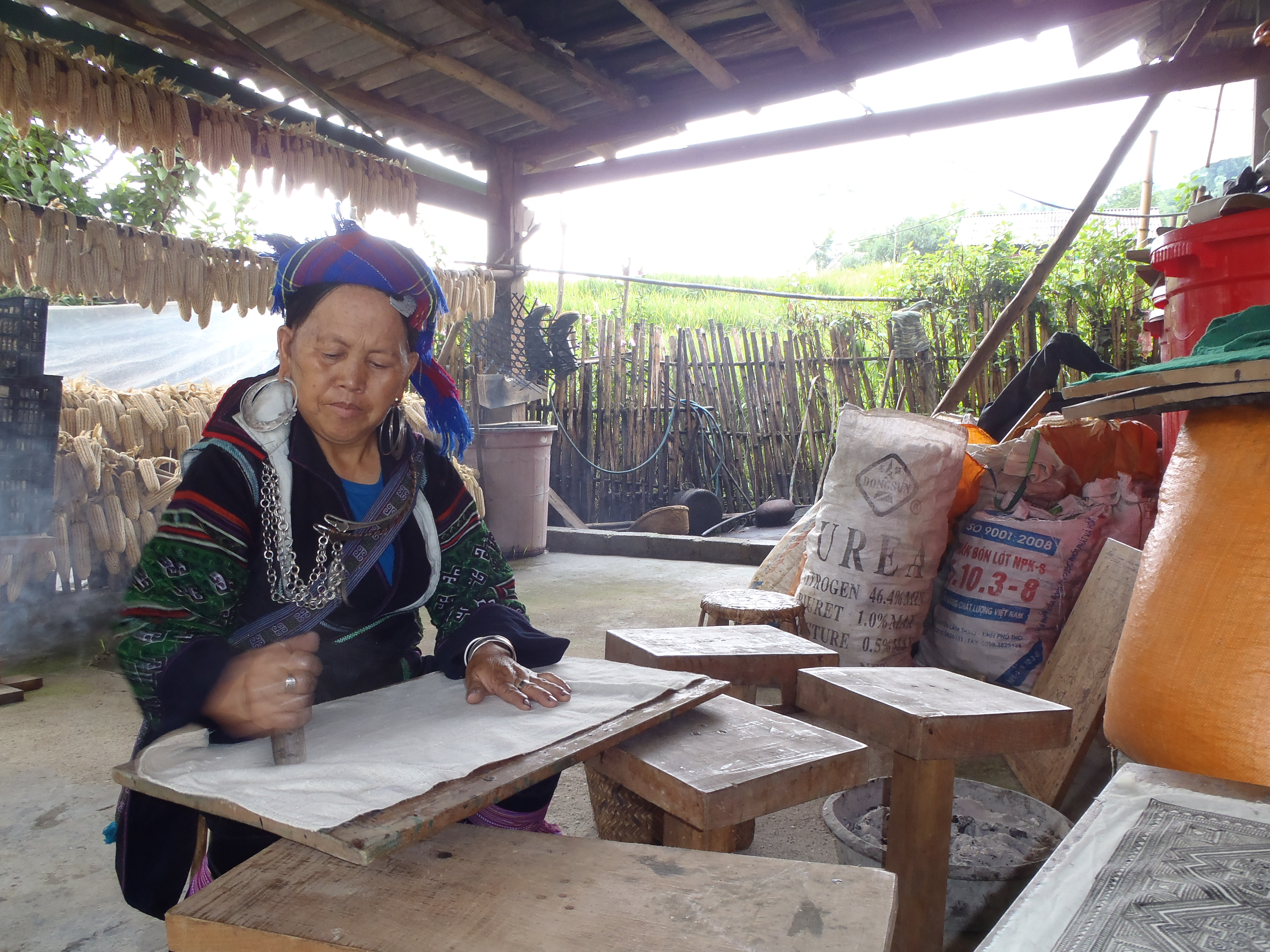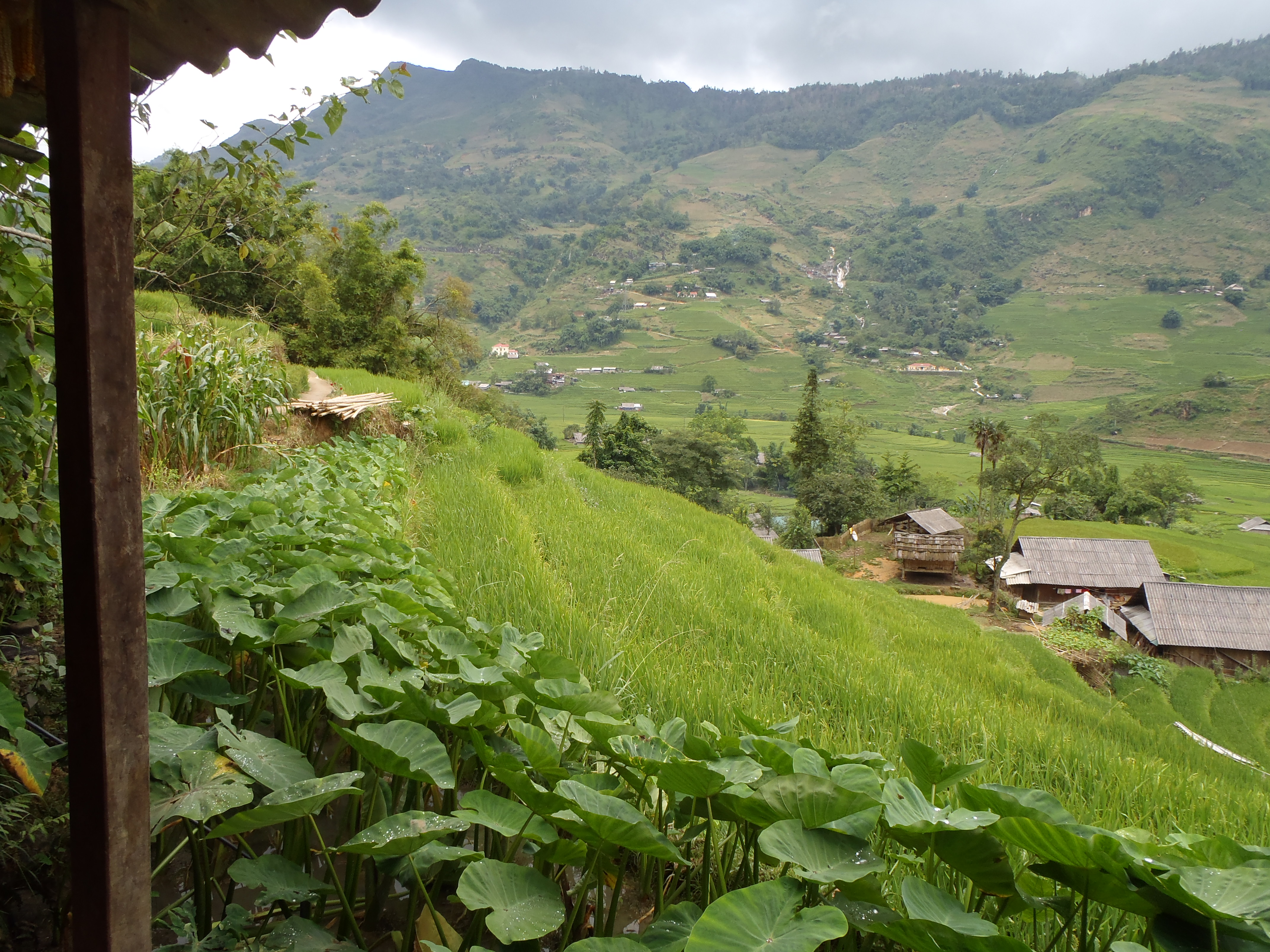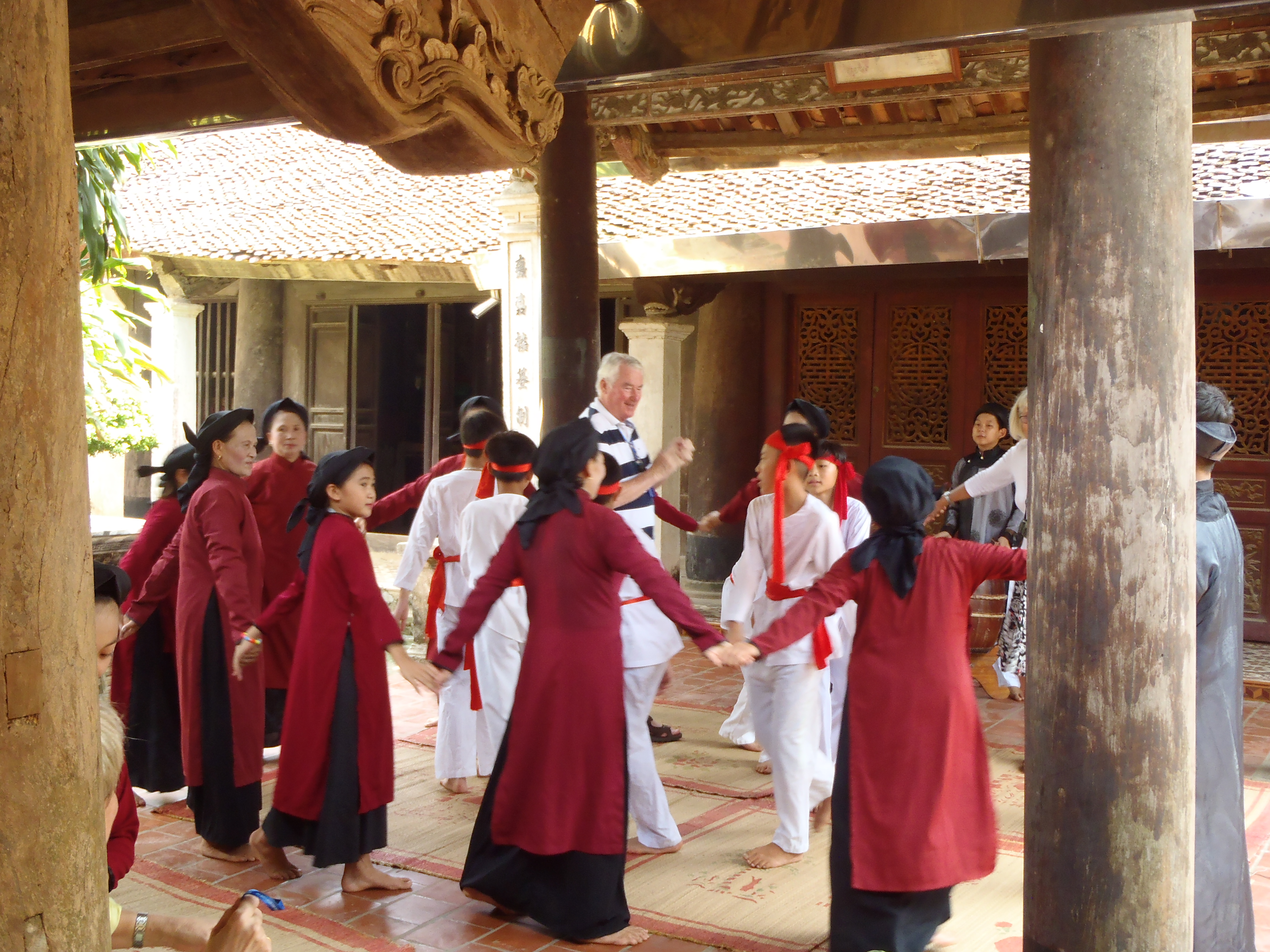Strolling Through Sapa, written by Nick Hewitt, our Digital Marketing Specialist, explored Sapa’s town and the surrounding rice terraces.
Developed over centuries of farming by the hands of minority groups emigrating south from China. The rice terraces of Sapa stand as a stunning reminder of Vietnam’s capacity to produce rice. No large machinery here, however. It’s all planted, tended and harvested by hand in a steep and not always inviting environment. The result? A layered and mountainous region scattered with rustic huts and traditionally clad locals ready to welcome you with a smile.
All Aboard!
My journey to Sapa began with an overnight train into the mountains from Hanoi to Lao Cai. The ride was a little bumpy, but the four-person cabin I slept in was comfortable, air-conditioned and quiet. As soon as I set foot on the platform in Lao Cai early in the morning, I was inundated with the usual crowd. Illustrious locals looking to provide transport, tour guides or accommodation. However, my guide, Tuan, was not far behind. He had me fed and in a car up to Sapa before I’d even woken up properly.
We dropped my bags at the Chau Long Hotel and set off for the first walk of the trip, a gentle stroll from Lao Chai to Ta Van. What struck me first was the sheer scale of the landscape that is covered by rice terraces. No available ground is wasted, so every shelf, nook and platform hosted some sort of crop. The diminutive homes scattered across the hills remain mainly rustic in appearance. All occupied by traditionally dressed locals from varying ethnic backgrounds.
It’s the people you remember…
After walking through Lao Cai’s main town (consisting mostly of a market full of local produce), we arrived at Mrs Moo’s house. Set part way up the hill, this abode makes for a great viewpoint with a green tea in hand and your feet in a bath of herbs grown in the fields.
It also doubles as a homestay for the more ambitious trekkers who set off on multi-day expeditions. Mrs Moo is part of the Hmong community (the ‘H’ is silent), who came to Vietnam 200 years ago. Roughly 900,000 Hmong remain in this area as part of a diverse population of ethnic groups who coexist peacefully.
Saying goodbye to Mrs Moo, we continued our journey through the rice paddies to the home of Mrs Ye, a lady of Zay ethnicity who specialises in the ancient art of Batik. This is an artistic pursuit that involves decorating cloth (mainly hemp) with intricate wax shapes and then soaking the resulting product in the dye.
It’s a tricky endeavour, crafted using many stamps and pen-like tools. The more advanced pieces taking around three days to complete. The wax, hemp and dye are all produced from the surrounding crops. Mrs Ye’s creations are then often sold to the community or tourists. Luckily for me, I had Mrs Ye’s assistance with my Batik cloth. The final design was rescued before I turned it into a waxy riddled disaster.
Spectacular Sapa
What awaited us following our Batik lesson was possibly the most scenic walking section of the tour. With two paths available to us, we took the high road up and around some of the loftier huts to witness the impressive expanse of agricultural scenery. The terraces neatly layer this otherwise wild area and provide a unique contrast in the light that comes streaming down the valley. We crossed rivers, passed waterfalls, waved at local children and stopped frequently for photo opportunities before finishing in Ta Van, a Black Hmong village where our ride back to the hotel was waiting.
Hiking Facts:
Difficulty: Mild
Distance: Approximately 5km
Time: Approximately 1-1.5 hours (plus one hour with locals)
Buffalo, pigs and chickens… oh, my!
This morning, we walked directly from Sapa to the rustic Hmong village of Suoi Ho. Cardamom and green tea plantations flanked our path, just 10 minutes out of town. Tuan guided us along the Suoi Ho River, explaining the bears and snakes in bamboo forests atop hills.
We encountered Hmong people with curious forehead marks, made by heating a buffalo horn, believed to relieve headaches. Continuing to Ma Tra, the enduring features were the residents – children guiding buffaloes, pigs and chickens in fields, and Red Dao women with shaved eyebrows, a sign of marriage.
Despite conflicts with the French, Chinese, and Americans, the culture here maintains authenticity. Not far from Ma Tra lies the ruins of Ta Phin Monastery, a French Colonial abbey built by deported Japanese nuns. Abandoned due to instability, it’s now a hollow structure overtaken by foliage—a great spot for pictures and a day’s end.
Hiking Facts:
Difficulty: Mild
Distance: Approximately 7km
Time: Approximately 3 hours
Exploring Downtown Sapa
Whilst the surrounding hills are Sapa’s main attraction, the town itself is certainly worth exploring. Countless bars, restaurants and coffee shops face the streets that bustle with tour groups, stalls and scooters. A couple of hours can happily be spent watching the world go by. All while eating local food with a Vietnamese coffee. The main square and focal point of the town is flanked by a Catholic Church. There is also a local park, some street vendors and a market nearby.
The Love Market
What’s most curious here is what happens each Saturday. The ‘Love Market’!
Many Red Dao people have arranged marriages, it’s not uncommon for couples to be less than intimate with each other. The love market, it would appear, is a place where people from arranged marriages come and connect with individuals of their own choosing.
Taking place in the main square, Red Dao people gather to sing songs at people of interest. This is in hope of enticing a partner to a quiet place nearby. Sapa itself doesn’t have to sing such songs. Its other charms are enough to entice travellers into a brief dalliance.
Want to visit Sapa? Head to our dedicated page for more information




